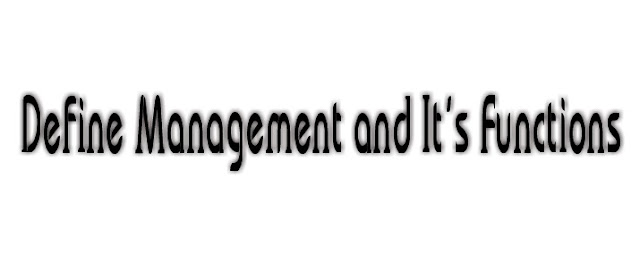Define Management and It’s
 |
| Define Management and |
Definition of Management
Management is an activity consisting of a
distinct process – the management process – which is primarily concerned with
the important task of goal achievement. Every business enterprise has certain pre-determined
objectives. Just as in a football or hockey team, howsoever expert the players
might be, they cannot defeat the rival team until and unless they make an
integrated effort under the directions of an able Captain. Similarly, no
business enterprise can achieve it’s
In management terminology, this central
coordinating agency is technically known as ‘M-A-N-A-G-E-M-E-N-T’ and the
methodology of getting things done is known as ‘Management Process’. The
process, in general, is defined as a series of actions or operations conducting
to an end. The logic of the management process is that particular functions are
performed in a sequence through time. In other words, whatever function are
performed by a manager and the sequence in which they are performed, is
designated as ‘Management Process’.
Management has been described as a social process involving
responsibility for economical and effective planning and regulations of
operation of an enterprise in the fulfillment of given purpose. It is a dynamic
process consisting of various elements and activities. These activities are
different from operative functions like marketing, finance, purchase, etc.
Rather these
Functions of Management Process:
The main functions of management process are as follows:
1. Planning: Planning is the conscious determination of a
future course of action to achieve the desired results. Henry Fayol observes
that management should chalk out a plan which is the result envisaged, the line
of action to be followed, the stages to go through and the methods to use.
Planning is the process of thinking before doing. It means the determination of
what is to be done, how and where is to be done, who is to do it and how
results are to be evaluated. This step involves mapping out exactly how to
achieve a particular goal. Say, for example, that the organisation’s
2. Organising Organisation is avoided operation organisation organised organise required resources
3. Staffing: It means manning the positions created by
organisation process organisation
4. Directing: Once subordinates are oriented, the superior
has a continuous organisational achievement organisational organising are Direction personnel management which organisational
5. Controlling: After
the other elements are in place, a manager’s job is not finished. He needs to
continuously organisation







No comments:
Post a Comment